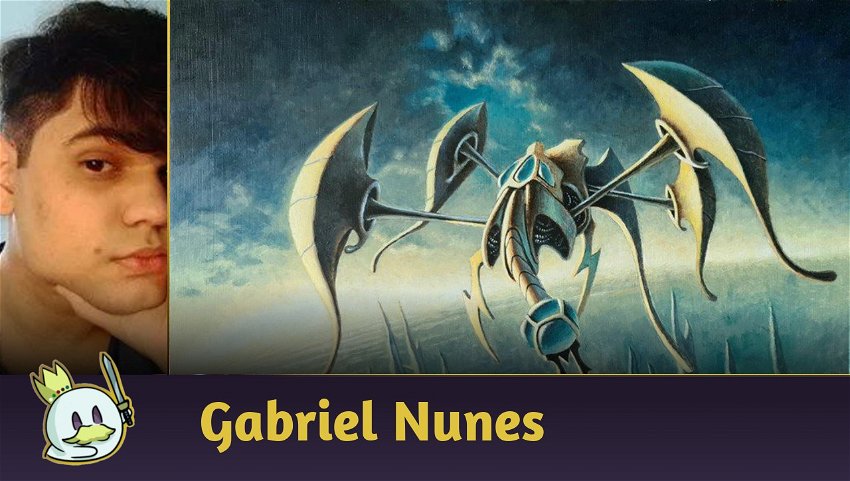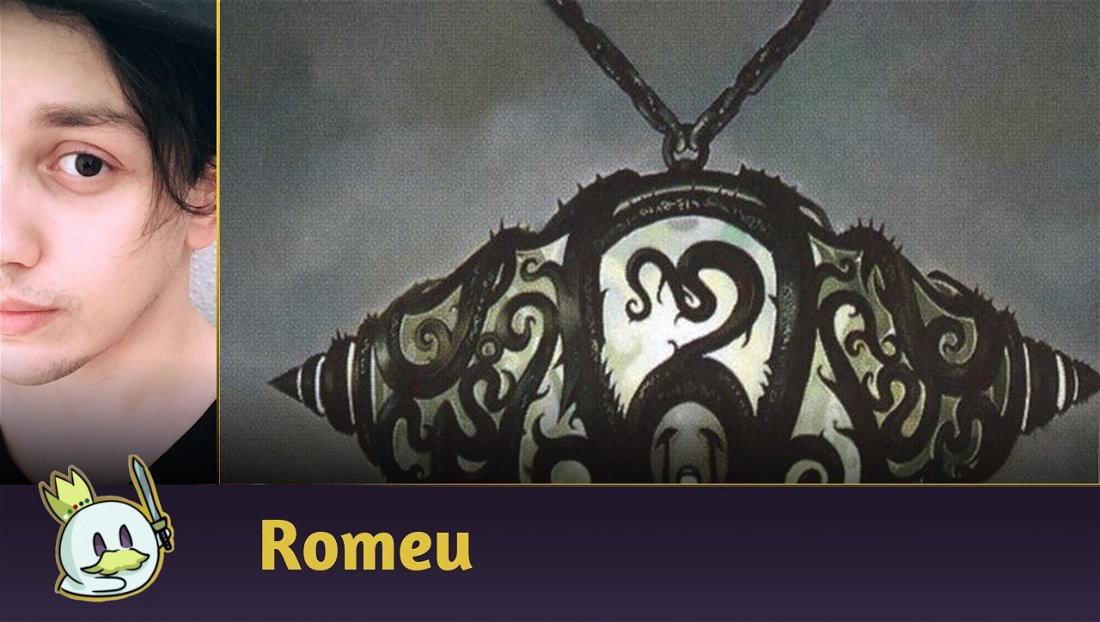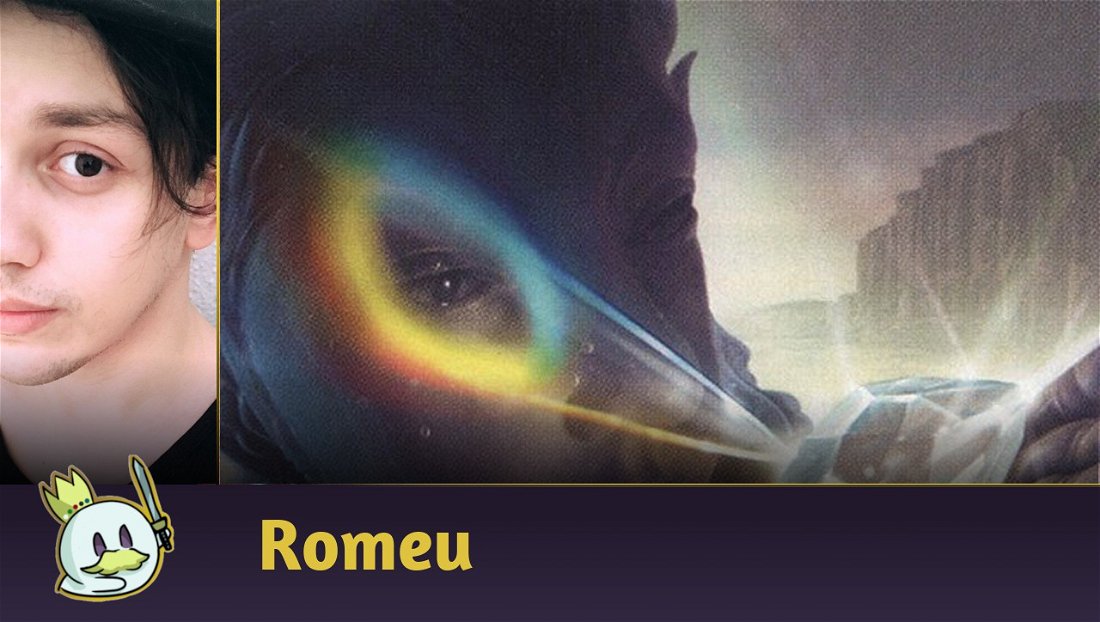"Affinity" or "Robots" is an extremely classic deck that is very popular among players of different formats. Whether for those who remember Standard from Darksteel, for those who play Pauper or even Modern, the deck has always been known for being an extremely explosive and aggressive deck. But today we are going to see how it is possible to think of another strategy even with such a classic mechanic, analyzing the list that the player FriskiFraska used to reach the top 1 in the Challenge that took place on January 16.
Ad
The Decklist
Analyzing the Deck
8-Cast

It's only fair to start talking about cards with affinity, since it's the ability that names the deck and that's where it all started. Affinity for Artifacts is an extremely exploitable ability, which makes strong bodies and effects to be made for a low cost, it's a matter of 8 or 80: Either you pay a cost above what the card is worth, in case you have few or no artifacts on the board, or you pay a cost well below what the card is worth, if you have multiple artifacts on the field to increase your affinity. The deck obviously seeks the second situation, to have optimized spells and creatures in play.
Regarding Thoughtcast and Thought Monitor it is possible to talk about both cards at the same time because they do the same thing: they draw cards and most of the time for a very low price. Drawing two cards for one mana is every deck's dream, and here it's possible with Thoughtcast, being a great card advantage piece to keep the gas running while sequencing better plays. plays.
Thought Monitor does just that, plus the fact that it's a flying 2/2 artifact creature! Yes, its cost is higher and keeping six artifacts on the board is obviously a more difficult task than keeping four, but for this deck it's not a difficult task. Aside from the fact that affinity cards aren't good just with their cost reduced to the max, it's just the best version of them, but a Monitor costing two or even three mana is nowhere near a bad thing.
More Card Advantage

The role of affinity cards in the deck is to draw cards, but here we have even more, being one of the great features of this "new affinity", and we'll talk about that a bit later. For now, let's take a look at the other options for generating more resources.
Esper Sentinel is an artifact creature super present in the metagame since its launch, in Modern Horizons 2, being a card very similar to blue enchantments like Mystic Remora and Rhystic Study. But in turn, the Sentinel, in addition to having a body, has its ability linked to its power, being able to guarantee you cards with more certainty as the stronger it gets, not to mention that, being a low-cost artifact, it has synergy with basically everything in the deck, mainly in reducing the cost of our affinity cards.
Ingenious Smith was a great surprise that Adventures in Forgotten Realms brought to Modern. None of its effects are new, but the combination of two practical effects makes it the only non-artifact creature in the deck. Ensuring a selected artifact on four cards is already an interesting selection (Glint-Nest Crane has already gone through a period of experimentation in the deck for the same reason), pairing this effect with a body that grows with each artifact entering the battlefield, make a utility card with offensive power, which is all the deck wants! And speaking of which...
Ad
Offensive Power

This is where we'll get into the deck's winconditions, which are basically effects of creating creatures as large as the number of artifacts on your board (which, let's face it, will be a high number). So, the new Affinity will try to run over the opponent with stronger creatures than it can handle.
Nettlecyst is an equipment, but its effect makes the card more of a "creature with a second chance". From its casting, Nettlecyst will be a creature for the opponent to worry about, thanks to the living weapon. If the opponent can handle the germ, you can still equip it on your best creature, making it a huge threat. Not to mention that you can still equip it before the germ's death, in case you need to hit in the air to finish the opponent soon, or guarantee more cards with a huge Esper Sentinel.
And of course, an artifact deck couldn't miss Urza's Saga. The card basically does everything the deck needs without taking up the deck's creature or spell slot, and like any other artifact deck in Modern today, Affinity has an advantage over other Saga decks that aren't artifact-focused, as its usage is optimized. Land-tutored artifacts will make a lot more difference to your game, and your constructs will generally be much larger, being the deck's main wincondition.
Silver Bullets

And of course, for me to talk about Urza's Saga, I would have to reserve a space for its "Silver Bullets", since they are almost extensions of the land ittsekf, and here we have the most diverse effects: draw cards, exile graveyards, return problematic creatures to the opponent's hand, generate mana and mainly make one of its constructs able to pass the damage to the opponent, which is the case of Shadowspear, which can make any clock race resolve itself in a connection of damage.
Interactions

Well, as we're talking about a more cadenced version of the deck, it's important to keep in mind that the opponent won't sit around waiting for you to play your cards without making any threats, and for that, the deck has extremely synergistic interactions with the rest of the deck, always seeking to gain an advantage.
Metallic Rebuke is a counterspell that in this context is easy to fit without losing its sequencing, being able to tap artifacts, it is perfectly possible that in the turn you pass with only one mana open and still manage to answer the opponent's threat.
Portable Hole is another surprise that the D&D set has brought, being a removal for nonland permanents that interacts with everything else in the deck, can be found by Ingenious Smith and reduces affinity costs. Even with the cost constraint, it can handle most threats in the format, mainly because it's a 1-mana removal.
Comparisons
It's impossible not to talk about a new affinity, without comparing it to the old versions of the deck. For that, let's take a look at the deck that Justin Robb played at the Grand Prix Brisbane, in 2013.
Ad
Yes, even with some similar pieces, it's practically another deck: the version of affinity at the time was extremely more aggressive, both in sequencing the cards as soon as possible, and in finishing the game as soon as possible. It was also a deck that aimed to win with many artifacts and effects that care about it, like Cranial Plating or Arcbound Ravager, but in an extremely frantic way, casting pretty much everything very early thanks to the very low curve and the help of Mox Opal.
The old affinity was a risky deck, in the sense that after setting all the cards, the player would need to think about how to deal the most damage possible and finish the game in the shortest possible time, often putting all their power on one card, which required an absurd Metagame analysis to do this with less risk of losing to a removal on the return, but still without giving the opponent time to stabilize their game.
The new affinity, on the other hand, is a card advantage deck that is not concerned with sequencing everything in the first turns, but with maintaining a constancy of strong plays by suppressing your opponent in advantages. Thanks to the large amount of resources that all the cards we've seen in the last year, the new affinity aims to open distance between opponents by climbing in power while your cards in hand take much longer to run out. The win condition may look similar, but make no mistake, while the old affinity won on the race, dealing a massive amount of damage practically out of nowhere, the new affinity, when it works, shows that it will inevitably win, every turn, opening more advantage until there is no coming back.
Conclusion
Even with the same name, UW Affinity is a new deck for a new moment in Modern, where value both value and board impact are increasingly important in the format. And that is something our new deck does very well, revealing a promising future for the list, which could perhaps earn its place in the Metagame.
Until the next article!
Any questions or suggestions, I'm available in the comments!








— Comments0
Be the first to comment